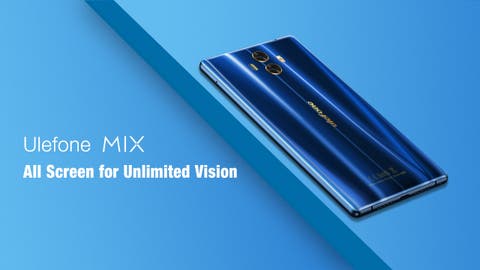The Ulefone MIX is one of the most interesting devices the Chinese phone maker has been working on in the past months. The handset is said to feature a screen-to-body ratio as high as 90.2%; but how did they achieve that? Well, today we’re going to learn a bit more about that as they released some pictures of the actual front panel.
So, as we can see in the renders, the smartphone’s front panel is a single piece of glass with near to no bezels around the top, left and right sides. The display takes almost the entirety of the front with few space left for the fingerprint scanner at the bottom. Ulefone say they could have removed that but in their opinion people prefer having the scanner at the front, and so they did.
Getting deeper on how they actually get such an high screen-to-body ratio, we learn that the earpiece has been minimized and placed at the very top of the handset, and the light sensor and front camera have been moved below the display. Ulefone also states that the selfie shooter is a custom-made and it’s 50% smaller than what you usually find on other devices. Meanwhile the proximity sensor will be replaced by some software optimization.
If we have a look at the display itself we notice it’s rather thin. That’s because Ulefone used on-cell display technology which allows to make slimmer screens. In addition to that that, the on-cell display also features an higher optical transmissivity, better color reproduction and faster response times for a better viewing experience.
Ulefone say the MIX will be officially launched at the end of September and then go up for pre-orders in early October. The Ulefone MIX is also going to be a super cost-effective device, at least at the presale price. Learn the latest about the Ulefone MIX on the company’s blog.
